Effects of yoga on cardiometabolic risks and fetomaternal outcomes are associated with serum nitric oxide in gestational hypertension: a randomized control trial
- PMID: 35821033
- PMCID: PMC9276689
- DOI: 10.1038/s41598-022-15216-4
Effects of yoga on cardiometabolic risks and fetomaternal outcomes are associated with serum nitric oxide in gestational hypertension: a randomized control trial
Abstract
Gestational hypertension (GH) is associated with adverse cardiometabolic and pregnancy outcomes. Though yoga is known to be beneficial in pregnancy, the effects of yoga rendered for twenty weeks starting from 16th week of gestation in pregnant women having risk of GH on the incidence of hypertension, cardiometabolic risks and fetomaternal outcomes have not been studied. A randomized control trial was conducted on 234 pregnant women having risk of GH receiving standard antenatal care (Control group, n = 113), and receiving standard care + yoga (Study group, n = 121). Interventions were given for twenty weeks starting at 16th week of gestation. Baroreflex sensitivity (BRS), heart rate variability (HRV), insulin resistance, lipid-risk factors, and markers of inflammation, oxidative stress and vascular endothelial dysfunction (VED) were assessed before and after intervention. Incidence of new-onset hypertension, level of cardiometabolic risks at 36th week, and fetomaternal-neonatal outcomes in the perinatal period, were noted. The link of hypertension, pregnancy outcomes and cardiometabolic risks with nitric oxide (NO), the marker of VED was assessed by analysis of covariance, Pearson's correlations, and multilinear and logistic regressions. In study group, 6.61% women developed hypertension compared to 38.1% in the control group following 20-week intervention and there was significant decrease in risk of developing GH (RR, 2.65; CI 1.42-4.95). There was less-painful delivery, decreased duration of labor, increased neonatal birthweight and Apgar score in study group. Increase in total power of HRV (β = 0.187, p = 0.024), BRS (β = 0.305, p < 0.001), and decrease in interleukin-6 (β = - 0.194, p = 0.022) had significant association with increased NO. Twenty weeks of practice of yoga during pregnancy decreases the incidence of hypertension, improves fetomaternal outcomes, and reduces cardiometabolic risks in pregnant women having risk of GH. Decreased blood pressure, increased HRV, BRS and birth weight and decreased inflammation were associated with improved endothelial function. Trial registration: Clinical Trials Registry of India (CTRI), registration number: CTRI/2017/11/010608, on 23.11.2017.
© 2022. The Author(s).
Conflict of interest statement
The authors declare no competing interests.
Figures
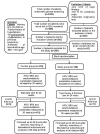
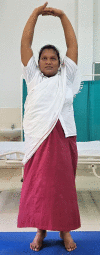


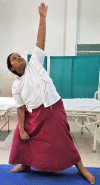





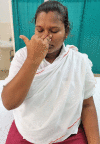

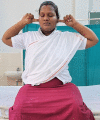




Similar articles
-
Attenuation of baroreflex sensitivity and heart rate variability is linked to reduced levels of nitric oxide in pregnant women having risks of developing gestational hypertension.Clin Exp Hypertens. 2021 May 19;43(4):356-362. doi: 10.1080/10641963.2021.1883053. Epub 2021 Feb 11. Clin Exp Hypertens. 2021. PMID: 33567918
-
Effects of 12 Weeks Practice of Yoga on Heart Rate Variability in Males with Type 2 Diabetes Receiving Oral Antidiabetic Drugs: A Randomized Control Trial.J Altern Complement Med. 2021 Dec;27(12):1105-1115. doi: 10.1089/acm.2020.0489. Epub 2021 Sep 28. J Altern Complement Med. 2021. PMID: 34582701 Clinical Trial.
-
Inflammation and decreased cardiovagal modulation are linked to stress and depression at 36th week of pregnancy in gestational diabetes mellitus.Sci Rep. 2023 Jun 26;13(1):10348. doi: 10.1038/s41598-023-37387-4. Sci Rep. 2023. PMID: 37365247 Free PMC article.
-
Calcium supplementation commencing before or early in pregnancy, for preventing hypertensive disorders of pregnancy.Cochrane Database Syst Rev. 2019 Sep 16;9(9):CD011192. doi: 10.1002/14651858.CD011192.pub3. Cochrane Database Syst Rev. 2019. PMID: 31523806 Free PMC article.
-
The efficacy and safety of metformin alone or as an add-on therapy to insulin in pregnancy with GDM or T2DM: A systematic review and meta-analysis of 21 randomized controlled trials.J Clin Pharm Ther. 2022 Feb;47(2):168-177. doi: 10.1111/jcpt.13503. Epub 2021 Aug 7. J Clin Pharm Ther. 2022. PMID: 34363237
Cited by
-
Influence of Physical Activity during Pregnancy on Birth Weight: Systematic Review and Meta-Analysis of Randomized Controlled Trials.J Clin Med. 2023 Aug 21;12(16):5421. doi: 10.3390/jcm12165421. J Clin Med. 2023. PMID: 37629463 Free PMC article. Review.
-
Effect of early endothelial function improvement on subclinical target organ damage in hypertensives.Sci Rep. 2024 Jul 12;14(1):16078. doi: 10.1038/s41598-024-67143-1. Sci Rep. 2024. PMID: 38992162 Free PMC article.
-
Influence of Physical Activity during Pregnancy on Neonatal Complications: Systematic Review and Meta-Analysis.J Pers Med. 2023 Dec 20;14(1):6. doi: 10.3390/jpm14010006. J Pers Med. 2023. PMID: 38276221 Free PMC article. Review.
-
Impact of Yoga beyond Physical Training on the Cardiovascular System: An Updated Review.J Tehran Heart Cent. 2024 Apr;19(2):79-88. doi: 10.18502/jthc.v19i2.16195. J Tehran Heart Cent. 2024. PMID: 40322769 Free PMC article. Review.
-
Influence of Physical Activity during Pregnancy on Maternal Hypertensive Disorders: A Systematic Review and Meta-Analysis of Randomized Controlled Trials.J Pers Med. 2023 Dec 21;14(1):10. doi: 10.3390/jpm14010010. J Pers Med. 2023. PMID: 38276226 Free PMC article. Review.
References
-
- World Health Organisation . The World Health Report 2005—Make Every Mother and Child Count. World Health Organization; 2005.
-
- Sailaja B, Cooly V, Sailcheemala B, Sailaja S. A study on risk factors, maternal and foetal outcome in cases of preeclampsia and eclampsia at a tertiary care hospital of South India. Int. J. Reprod. Contracept. Obstet. Gynecol. 2017;7:266–271. doi: 10.18203/2320-1770.ijrcog20175859. - DOI
Publication types
MeSH terms
Substances
Associated data
LinkOut - more resources
Full Text Sources
Medical

